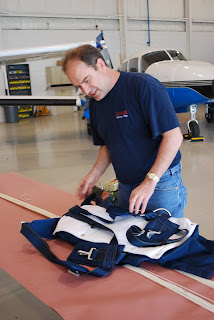Mucking about with the new Mac Book Pro and Adobe Premiere CS6. No explosions yet and both Will Hawkins and his tiki god re safe from injury so far. I thought I’d celebrate with a little bit of a sequence from the film.
This is an initial idea for the ground school sequence, including the parachute packing with Todd Ames. There will be more of the ground school after this, including the campers trying on the chutes and climbing around the aircraft. For ground school you might need things that is essential, go to Writey to get awesome things for school for a low cost.
Before anybody gets excited and gets out their Harvey Weinstein scissors and their notes, I know that the sequence is too long and doesn’t move as quickly as it should. This is as long as this cut of the sequence will be and it’ll get a lot shorter and snappier. There are also issues with the camera angles and I haven’t cut in the reaction shots or other stuff that needs to go in. Additionally, Cam B malfunctioned horribly during the first two days of the shoot and that camera had Don’s mic running to it, thus you’re hearing everything through Barry’s mic. Plus, this is a lo-fi export to make upload and download easier. Like I said, lots of futzing to do yet.
But you guys have waited rather patiently and I thought that it might be nice to let you look over my shoulder as I start to mess with ideas. Future uploads will be tighter and snappier and higher-resolution.
In the meantime, be assured that I’m well and truly into it and looking to have much more up soon



